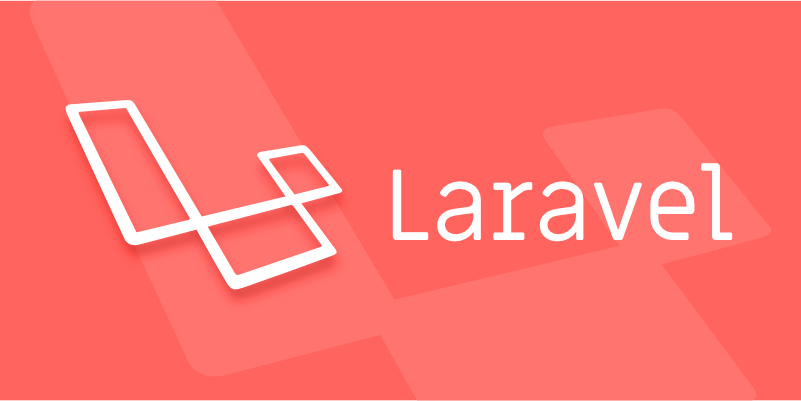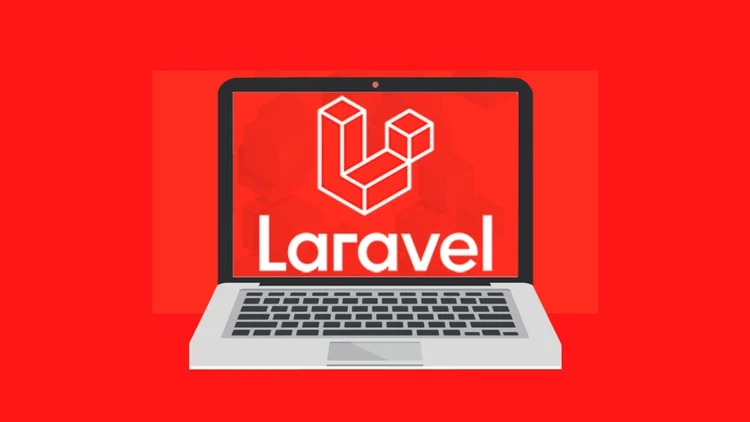How to handle payment gateways like Stripe or PayPal in Laravel?
Aug 03, 2025 pm 04:10 PMUse Laravel Cashier for Stripe subscriptions by installing it, publishing migrations, adding the Billable trait to the User model, creating subscriptions with a payment method, and handling webhooks via a defined route. 2. For one-time Stripe payments, install the Stripe PHP SDK, set environment variables, create a payment controller to process charges, and use Stripe.js to securely collect card details and generate tokens. 3. Integrate PayPal using the srmklive/paypal package by installing it, publishing configuration, setting up credentials, creating a controller to initiate and handle payments via ExpressCheckout, and defining success and cancel routes. 4. Follow security best practices by never handling raw card data, using environment variables for API keys, verifying webhook signatures, logging failed payments, and testing with sandbox accounts. 5. On the frontend, use Stripe.js to securely collect payment details by initializing Stripe, creating a card element, mounting it to the DOM, and generating a token on form submission to send to the Laravel backend. Laravel simplifies payment integration with secure, package-driven workflows for Stripe and PayPal when best practices are followed.

Handling payment gateways like Stripe or PayPal in Laravel is straightforward thanks to Laravel's ecosystem, available packages, and the official SDKs from these providers. Here’s how you can integrate and manage them effectively.

1. Using Laravel Cashier for Stripe (Recommended for Subscriptions)
If your app uses recurring billing or subscriptions, Laravel Cashier is the best way to handle Stripe.
Install Cashier
composer require laravel/cashier
Publish Migration and Run
Cashier provides migrations for storing subscription data:

php artisan cashier:install php artisan migrate
Add Billable Trait to User Model
use Laravel\Cashier\Billable;
class User extends Authenticatable
{
use Billable;
}Subscribe a User
$user = Auth::user();
$paymentMethod = $request->input('payment_method'); // from Stripe.js
$user->newSubscription('default', 'price_monthly')->create($paymentMethod);Handle Webhooks
Cashier automatically handles common Stripe webhooks (e.g., invoice.paid, subscription.canceled). Define a route:
Route::post('/stripe/webhook', function () {
// Handled by Cashier
})->name('stripe.webhook');Make sure to set up the webhook endpoint in the Stripe Dashboard.

2. Manual Stripe Integration (One-Time Payments)
For simple one-time payments without subscriptions, use the Stripe PHP SDK.
Install Stripe SDK
composer require stripe/stripe-php
Set Up Environment Variables
In .env:
STRIPE_KEY=pk_test_... STRIPE_SECRET=sk_test_...
Create a Payment Controller
use Stripe\Stripe;
use Stripe\Charge;
class PaymentController extends Controller
{
public function pay()
{
Stripe::setApiKey(env('STRIPE_SECRET'));
$token = request('stripeToken');
$charge = Charge::create([
'amount' => 1000, // in cents
'currency' => 'usd',
'description' => 'Example charge',
'source' => $token,
]);
return redirect()->back()->with('success', 'Payment successful!');
}
}?? Use Stripe.js or Elements on the frontend to securely collect card details and generate a token.
3. PayPal Integration Using Srmklive/PayPal Package
Laravel doesn’t have a built-in PayPal solution like Cashier, but the srmklive/paypal package is widely used.
Install the Package
composer require srmklive/paypal:~3.0
Publish and Configure
php artisan vendor:publish --provider="Srmklive\PayPal\Providers\PayPalServiceProvider"
Update config/paypal.php with your PayPal sandbox/live credentials.
Use in Controller
use Srmklive\PayPal\Services\ExpressCheckout;
class PayPalController extends Controller
{
public function pay()
{
$provider = new ExpressCheckout;
$data = [];
$data['items'] = [
[
'name' => 'Product 1',
'price' => 10,
'qty' => 1
]
];
$data['return_url'] = route('paypal.success');
$data['cancel_url'] = route('paypal.cancel');
$data['invoice_id'] = uniqid();
$data['total'] = 10;
$response = $provider->setExpressCheckout($data);
return redirect($response['paypal_link']);
}
public function success(Request $request)
{
$provider = new ExpressCheckout;
$response = $provider->getExpressCheckoutDetails($request->token);
if ($response['ACK'] == 'Success') {
// Payment successful
}
return redirect('/')->with('success', 'Payment completed');
}
}Don’t forget to set up routes for paypal.success and paypal.cancel.
4. Security & Best Practices
- Never handle raw card data on your server. Always use Stripe.js, PayPal SDKs, or hosted fields.
- Use environment variables for API keys.
- Verify webhooks with proper signature checks.
- Log failed payments for debugging and user support.
- Test with sandbox accounts before going live.
5. Frontend Integration Tips
For Stripe:
<script src="https://js.stripe.com/v3/"></script>
<script>
const stripe = Stripe('your-publishable-key');
const elements = stripe.elements();
const card = elements.create('card');
card.mount('#card-element');
</script>On form submit:
stripe.createToken(card).then(function(result) {
if (result.error) {
// Show error
} else {
// Send result.token.id to your Laravel backend
document.getElementById('stripeToken').value = result.token.id;
document.getElementById('paymentForm').submit();
}
});Basically, Laravel makes payment integration clean and secure — use Cashier for Stripe subscriptions, the official Stripe SDK for one-time payments, and srmklive/paypal for PayPal. Just keep credentials safe and always test in sandbox mode first.
The above is the detailed content of How to handle payment gateways like Stripe or PayPal in Laravel?. For more information, please follow other related articles on the PHP Chinese website!

Hot AI Tools

Undress AI Tool
Undress images for free

Undresser.AI Undress
AI-powered app for creating realistic nude photos

AI Clothes Remover
Online AI tool for removing clothes from photos.

Clothoff.io
AI clothes remover

Video Face Swap
Swap faces in any video effortlessly with our completely free AI face swap tool!

Hot Article

Hot Tools

Notepad++7.3.1
Easy-to-use and free code editor

SublimeText3 Chinese version
Chinese version, very easy to use

Zend Studio 13.0.1
Powerful PHP integrated development environment

Dreamweaver CS6
Visual web development tools

SublimeText3 Mac version
God-level code editing software (SublimeText3)

Hot Topics
 Creating Custom Validation Rules in a Laravel Project
Jul 04, 2025 am 01:03 AM
Creating Custom Validation Rules in a Laravel Project
Jul 04, 2025 am 01:03 AM
There are three ways to add custom validation rules in Laravel: using closures, Rule classes, and form requests. 1. Use closures to be suitable for lightweight verification, such as preventing the user name "admin"; 2. Create Rule classes (such as ValidUsernameRule) to make complex logic clearer and maintainable; 3. Integrate multiple rules in form requests and centrally manage verification logic. At the same time, you can set prompts through custom messages methods or incoming error message arrays to improve flexibility and maintainability.
 Working with pivot tables in Laravel Many-to-Many relationships
Jul 07, 2025 am 01:06 AM
Working with pivot tables in Laravel Many-to-Many relationships
Jul 07, 2025 am 01:06 AM
ToworkeffectivelywithpivottablesinLaravel,firstaccesspivotdatausingwithPivot()orwithTimestamps(),thenupdateentrieswithupdateExistingPivot(),managerelationshipsviadetach()andsync(),andusecustompivotmodelswhenneeded.1.UsewithPivot()toincludespecificcol
 Sending different types of notifications with Laravel
Jul 06, 2025 am 12:52 AM
Sending different types of notifications with Laravel
Jul 06, 2025 am 12:52 AM
Laravelprovidesacleanandflexiblewaytosendnotificationsviamultiplechannelslikeemail,SMS,in-appalerts,andpushnotifications.Youdefinenotificationchannelsinthevia()methodofanotificationclass,andimplementspecificmethodsliketoMail(),toDatabase(),ortoVonage
 Understanding Dependency Injection in Laravel?
Jul 05, 2025 am 02:01 AM
Understanding Dependency Injection in Laravel?
Jul 05, 2025 am 02:01 AM
Dependency injection automatically handles class dependencies through service containers in Laravel without manual new objects. Its core is constructor injection and method injection, such as automatically passing in the Request instance in the controller. Laravel parses dependencies through type prompts and recursively creates the required objects. The binding interface and implementation can be used by the service provider to use the bind method, or singleton to bind a singleton. When using it, you need to ensure type prompts, avoid constructor complications, use context bindings with caution, and understand automatic parsing rules. Mastering these can improve code flexibility and maintenance.
 Strategies for optimizing Laravel application performance
Jul 09, 2025 am 03:00 AM
Strategies for optimizing Laravel application performance
Jul 09, 2025 am 03:00 AM
Laravel performance optimization can improve application efficiency through four core directions. 1. Use the cache mechanism to reduce duplicate queries, store infrequently changing data through Cache::remember() and other methods to reduce database access frequency; 2. Optimize database from the model to query statements, avoid N 1 queries, specifying field queries, adding indexes, paging processing and reading and writing separation, and reduce bottlenecks; 3. Use time-consuming operations such as email sending and file exporting to queue asynchronous processing, use Supervisor to manage workers and set up retry mechanisms; 4. Use middleware and service providers reasonably to avoid complex logic and unnecessary initialization code, and delay loading of services to improve startup efficiency.
 Managing database state for testing in Laravel
Jul 13, 2025 am 03:08 AM
Managing database state for testing in Laravel
Jul 13, 2025 am 03:08 AM
Methods to manage database state in Laravel tests include using RefreshDatabase, selective seeding of data, careful use of transactions, and manual cleaning if necessary. 1. Use RefreshDatabasetrait to automatically migrate the database structure to ensure that each test is based on a clean database; 2. Use specific seeds to fill the necessary data and generate dynamic data in combination with the model factory; 3. Use DatabaseTransactionstrait to roll back the test changes, but pay attention to its limitations; 4. Manually truncate the table or reseed the database when it cannot be automatically cleaned. These methods are flexibly selected according to the type of test and environment to ensure the reliability and efficiency of the test.
 Choosing between Laravel Sanctum and Passport for API authentication
Jul 14, 2025 am 02:35 AM
Choosing between Laravel Sanctum and Passport for API authentication
Jul 14, 2025 am 02:35 AM
LaravelSanctum is suitable for simple, lightweight API certifications such as SPA or mobile applications, while Passport is suitable for scenarios where full OAuth2 functionality is required. 1. Sanctum provides token-based authentication, suitable for first-party clients; 2. Passport supports complex processes such as authorization codes and client credentials, suitable for third-party developers to access; 3. Sanctum installation and configuration are simpler and maintenance costs are low; 4. Passport functions are comprehensive but configuration is complex, suitable for platforms that require fine permission control. When selecting, you should determine whether the OAuth2 feature is required based on the project requirements.
 Implementing Database Transactions in Laravel?
Jul 08, 2025 am 01:02 AM
Implementing Database Transactions in Laravel?
Jul 08, 2025 am 01:02 AM
Laravel simplifies database transaction processing with built-in support. 1. Use the DB::transaction() method to automatically commit or rollback operations to ensure data integrity; 2. Support nested transactions and implement them through savepoints, but it is usually recommended to use a single transaction wrapper to avoid complexity; 3. Provide manual control methods such as beginTransaction(), commit() and rollBack(), suitable for scenarios that require more flexible processing; 4. Best practices include keeping transactions short, only using them when necessary, testing failures, and recording rollback information. Rationally choosing transaction management methods can help improve application reliability and performance.






